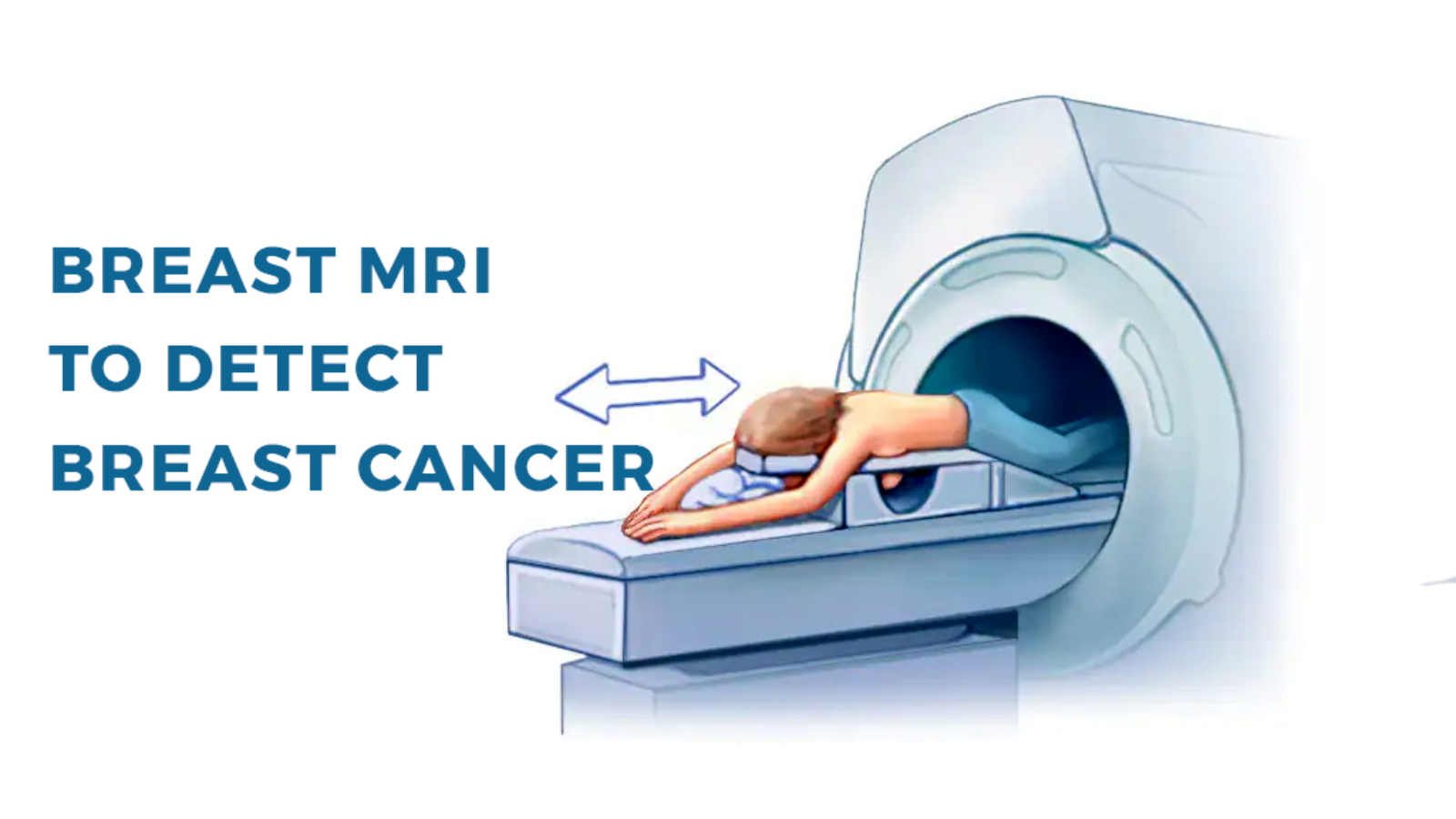A breast MRI is an image-based test that provides clear images of breast tissues. Health professionals typically utilize it to determine the presence of breast cancer. MRI is highly sensitive to breast cancer screening; however, it also reveals things that require monitoring and/or biopsy, but aren’t cancerous. This is why the breast MRI is utilized as a screening tool (with mammography) for those who are at a higher risk of developing breast cancer. This is also a good method to determine if a patient has specific symptoms or a history of breast cancer.
Breast MRI Overview
MRI is an imaging technique that uses strong magnetic fields to capture images of breast tissue. It combines the power of radio waves and magnetic fields to produce a computerized image of the breast’s structures. While the breast MRI may provide a highly clear image, sometimes, it can be used to detect breast cancer in women at risk. The procedure is commonly used for the screening and diagnosis of breast cancer.
The doctors suggest breast MRI to analyze the cancerous cells and their spread and location in your body. Moreover, the process can help the doctor determine a suitable treatment plan and observe the extent to which your breast cancer treatment is working.
Purpose of Test
MRI is an imaging method that is carried out from the outside of your body (non invasive). It does not expose your body to radiation or breast compression. MRI offers much details about soft tissues when compared to X-rays, CT scans or ultrasound.
The doctors usually advise breast MRI for women who received a cancer diagnosis. This is basically a way to determine the tumor size, while also detecting tumors in the opposite breast. A breast MRI is also a good option to screen breast cancer and also to check the patient’s health following cancer treatment.
Why Is Breast MRI Done?
Mentioned below are the top reasons why doctors advise Breast MRI for women with high cancer risk:
- To Detect Breast Cancer
Certain women are at high risk of developing Breast cancer. While MRI may detect cancers that cannot be seen in mammograms however, it is also more likely to identify things that don’t turn out to be cancerous (called false positives). It can lead to women having tests and/or biopsies that don’t end up being required. This is the reason MRI is not suggested as an examination for women who are at average risk of developing breast cancer.
- Determining the Severity of Breast Cancer
If breast cancer gets detected, the breast MRI can determine the size and cancer spread in the patient. Moreover, this can be helpful to determine the presence of cancer cells in the opposite breasts. The breast MRI can be a bit ineffective when it comes to this situation, and not every woman with confirmed breast cancer should undergo this test.
- To Look for Silicone Breast Implants Leak
For women who have silicone breast implants implanted, breast MRI is a way to determine if there are leaks in the implant. It isn’t recommended in women who have saline implants.
- To Check For The Breast Cancer Symptoms
Doctors may suggest Breast MRI to check for the cancer symptoms like abnormal discharge from the nipple, etc. Other tests that involve imaging like mammograms or breast ultrasounds are generally performed prior to MRI; however, MRI is usually preferred if the results from these tests aren’t clear.
Difference Between the Breast MRI and Mammogram
Healthcare professionals use mammograms and MRIs to detect breast cancer and other irregularities.
However, mammograms are typically the first choice for screening and diagnosing breast cancer in women above 40 years of age, in particular because mammograms are the sole imaging test that can reliably detect microcalcifications, which is the first indicator of certain breast cancers.
Breast MRIs can be used in younger females and can reveal cancers that mammograms may miss. However, they also have the possibility to misinterpret benign breast tissues as cancerous that could result in a false-positive diagnosis.
How do I prepare for an MRI Breast?
Before you undergo an MRI, the doctor will explain the procedure, while also reviewing your entire medical and physical background. You must inform the doctor of any medications you are taking or about any allergies you have.
Also, you must inform your doctor if:
- You have any medical implantations as they could affect the test results.
- Any allergic reactions to the contrast dye.
- You’ve been diagnosed with kidney issues.
- You’re pregnant or you believe you might get pregnant or you’re nursing
The breast MRIs aren’t considered to be safe during pregnancy. Women breastfeeding must not breastfeed their children for two days after an MRI test.
It is also crucial to plan for your MRI before your menstrual cycle begins. The ideal time for your MRI is between days 7-14 of your menstrual period.
A MRI machine is situated in an enclosed, tight space, so you must inform your doctor if you’re claustrophobic. They could give you sedatives to help calm down. In the most extreme instances, the doctor might prefer open MRI, where the device isn’t as near to you as it is. An experienced doctor can well describe the options available to you.
Procedure: What Happens During the Breast MRI?
When undergoing the breast MRI, the patients will be informed about the events during the procedure. Mentioned below are a few steps that a person may expect breast MRI:
- The patient is laid face-down on a padded table specifically designed for breast MRIs. The table has special openings to allow breasts to be examined and scanned without being squeezed or flattened.
- The table and patient then get in the MRI machine, which appears like a tube or tunnel; however, they are much more flexible.
- A MRI operator and patient may talk via an intercom and this way the operator can provide instructions throughout the procedure.
- The patient is expected to remain still during the time where two to six photos are captured. The MRI machine can sound a loud tapping noise when it is taking photos. It is normal for breasts to feel warm during an MRI and certain patients might feel that they require going to the bathroom.
The MRI process usually takes around 30 minutes; however, sometimes longer in the event where the doctor has to repeat any image.
Getting Results
Your radiologist will submit the results about an MRI to your doctor and the doctor will then analyze the MRI reports to plan a suitable treatment strategy for your condition.
Risks of Breast MRI
There’s no evidence that magnetic fields or radio waves present in breast MRI are harmful in any way. However, if you’re pregnant and suffering from any other clinical condition, convey it to your doctor immediately.
Mentioned below are other things about breast MRI that you must keep in your mind:
False-Positive Results: An MRI does not always differentiate between cancerous and noncancerous tumors. This means that it can only detect growths that appear to be cancerous, but they aren’t. It is possible to get a biopsy to verify the findings of the test which involves the surgical removal of a small amount of the tissue found in your suspected lump.
Allergy Reaction to Contrast Dye: During an MRI, a dye gets injected in your bloodstream to make images more clear. This dye is proven to trigger allergic reactions, causing serious complications for those suffering from kidney issues.
Wrapping up!
We tried our best to cover every relatable aspect about Breast MRI that a patient must know. It basically refers to a procedure that the doctors perform to detect cancer and its spread in women with high risk. We discussed everything from purpose to preparation and expectation during the whole MRI process above.
Although it is safe, a breast MRI could cause anxiety to some patients. However, having a professional like Dr. Sameeksha at Samsara Cancer Care by your side, you can be assured to have a smooth journey.

